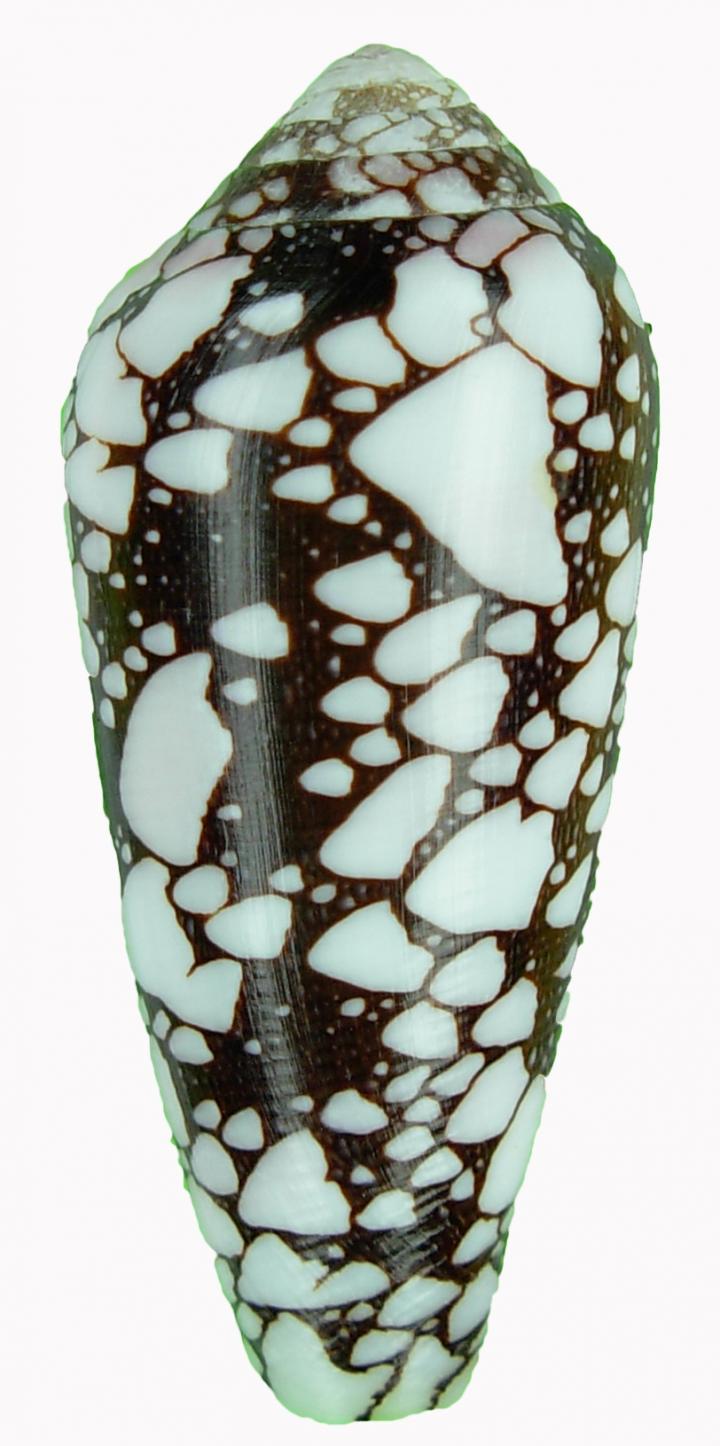Killer sea snail a target for new drugs

This is a Conus episcopatus snail. Credit: Professor Richard Lewis, IMB
Professor Paul Alewood, from UQ's Institute for Molecular Bioscience, said the team used biochemical and bioinformatics tools to develop a new method to analyse the structure of the venom toxins, allowing them to delve deeper than ever before. “Cone snail venom is known to contain toxins proven to be valuable drug leads,” he said. “This study gives the first-ever snapshot of the toxins that exist in the venom of a single cone snail. “Cone snail venoms are a complex cocktail of many chemicals and most of these toxins have been overlooked in the past.”
Using their new method that involved accurately measuring and analysing the structure, activity and composition of the diverse range of proteins within venom, researchers discovered the highest number of peptides (mini-proteins) produced in a single cone snail.
“We also discovered six original 'frameworks' – 3D-shaped molecules suitable as drug leads – which we expect will support drug development in the near future,” Professor Alewood said.
There are 25 known frameworks discovered over the past 25 years, many of which have already led to a drug or drug lead for several diseases.
“We expect these newly discovered frameworks will also lead to new medications, which can be used to treat pain, cancer and a range of other diseases.”
The cone snail species studied by the researchers (Conus episcopatus) is found along the east coast of Australia and is one of 700 different species of cone snails.
“We anticipate there are a lot more interesting molecules to be found in the venom of other species, and we are keen to explore these using our new approach,”
“This new method of analysis can also be used in research on other animal venoms, or in related fields, such as studying protein expression from cells.
“It will help us gain a better understanding of biology, look for disease patterns or discover potential new drugs.”
The study, published in Proceedings of the National Academy of Sciences journal, was funded by the National Health and Medical Research Council.
Media Contact
All latest news from the category: Life Sciences and Chemistry
Articles and reports from the Life Sciences and chemistry area deal with applied and basic research into modern biology, chemistry and human medicine.
Valuable information can be found on a range of life sciences fields including bacteriology, biochemistry, bionics, bioinformatics, biophysics, biotechnology, genetics, geobotany, human biology, marine biology, microbiology, molecular biology, cellular biology, zoology, bioinorganic chemistry, microchemistry and environmental chemistry.
Newest articles

Bringing bio-inspired robots to life
Nebraska researcher Eric Markvicka gets NSF CAREER Award to pursue manufacture of novel materials for soft robotics and stretchable electronics. Engineers are increasingly eager to develop robots that mimic the…

Bella moths use poison to attract mates
Scientists are closer to finding out how. Pyrrolizidine alkaloids are as bitter and toxic as they are hard to pronounce. They’re produced by several different types of plants and are…

AI tool creates ‘synthetic’ images of cells
…for enhanced microscopy analysis. Observing individual cells through microscopes can reveal a range of important cell biological phenomena that frequently play a role in human diseases, but the process of…





















